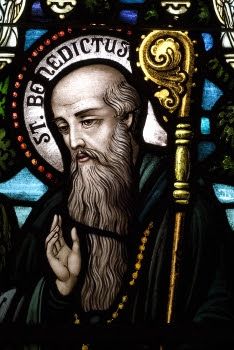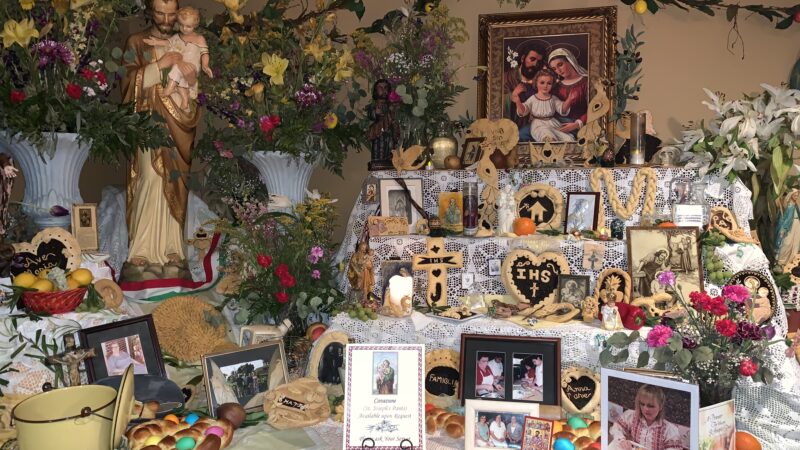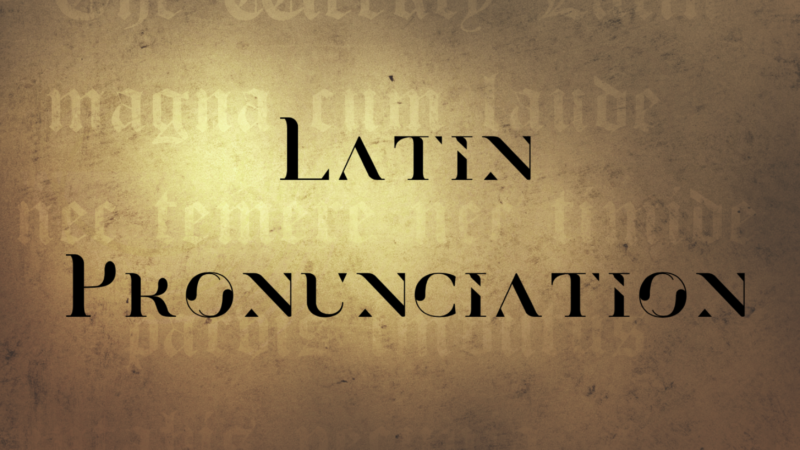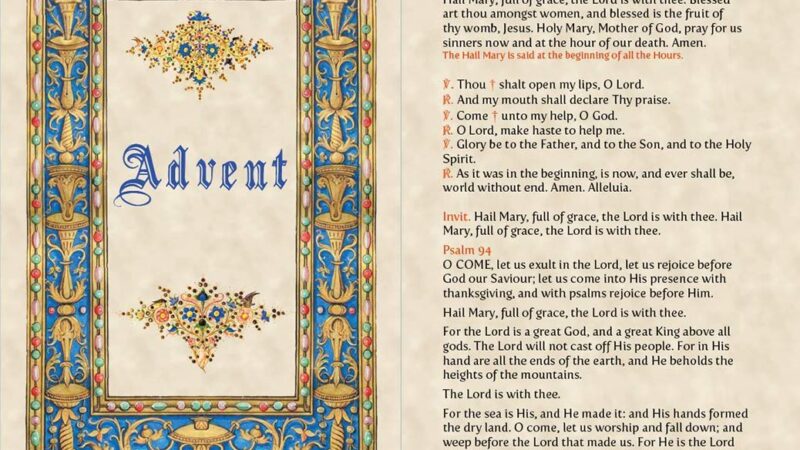St. Benedict Exorcism Medals
For this medal to be used, it must be properly blessed and exorcised:
I have seen priests who make the Sign of the Cross over these medals and say that it is done. Yes, priests have the authority to bless things and the Sign of the Cross is powerful but there was no correct form, or “words” in order to make it valid. Therefore, this does NOT exorcise them. I made this article to be used as a reference so that priests and laymen alike do not carry around medals that have been exorcised invalidly and therefore do not protect them.
Note: Only a validly ordained priest can validly do this. (It used to be just Benedictine Priests but it has been extended) Any priest can. Even Novus Ordo Priests. He just needs to be able to pronounce Latin (or do it in vernacular) and do the sign of the Cross and have Holy Water on him. Any Holy Water works because this prayer exorcises the medal anyways so you do not need Old Rite Holy Water (although it would be nice!)
I attached the document taken from the Latin Roman Ritual for the blessings and exorcisms of the St. Benedict Medal. The Priest says the “V’ parts and you say the “R” parts.
He also does the sprinkling of Holy Water and reads the paragraphs of words. It is all in Latin and that is the language of the Church and its the most effective against demons (they hate it).
Anytime there is a “+” (Cross symbol) this means that he does a Sign of the Cross over the medal. I also included the blessing and exorcism of a Crucifix just incase the St. Benedict Medal is inside of a Crucifix or you have a Crucifix you want blessed and exorcised.
The first half of the document is the exorcism and blessing of the Saint Benedict Medal. After the Holy Water is sprinkled on it, it is finished and ready to be used.
But If your medal is inside of a Crucifix, (like many St. Benedict Crucifix’s) THEN the Crucifix needs to be exorcised and blessed. The bottom part of this document is for the exorcism and blessing of the Crucifix. (This can also be used for any Crucifix).
-God Bless
The Medal or Cross of Saint Benedict
Medals, crosses, rosaries, statues, paintings, and other religious articles have long been used as a means of fostering and expressing our religious devotion to God and the saints. Icons, or painted images of Christ and the saints, are especially popular among Eastern Christians as an aid to Christian piety and devotion.
The use of any religious article is therefore intended as a means of reminding us of God and of stirring up in us a ready willingness and desire to serve God and our neighbor. With this understanding we reject any use of religious articles as if they were mere charms or had some magic power to bring us good luck or better health. Such is not the Christian attitude.
Origin of the Medal of Saint Benedict
For the early Christians, the cross was a favorite symbol and badge of their faith in Christ. From the writings of St. Gregory the Great (540-604), we know that St. Benedict had a deep faith in the Cross and worked miracles with the sign of the cross. This faith in, and special devotion to, the Cross was passed on to succeeding generations of Benedictines.
Devotion to the Cross of Christ also gave rise to the striking of medals that bore the image of St. Benedict holding a cross aloft in his right hand and his Rule for Monasteries in the other hand. Thus, the Cross has always been closely associated with the Medal of St. Benedict, which is often referred to as the Medal-Cross of St. Benedict.
In the course of time, other additions were made, such as the Latin petition on the margin of the medal, asking that by St. Benedict’s presence we may be strengthened in the hour of death, as will be explained later.
We do not know just when the first medal of St. Benedict was struck. At some point in history a series of capital letters was placed around the large figure of the cross on the reverse side of the medal. For a long time the meaning of these letters was unknown, but in 1647 a manuscript dating back to 1415 was found at the Abbey of Metten in Bavaria, giving an explanation of the letters. They are the initial letters of a Latin prayer of exorcism against Satan, as will be explained below.
The Jubilee Medal of Montecassino
The above features were finally incorporated in a newly designed medal struck in 1880 under the supervision of the monks of Montecassino, Italy, to mark the 1400th anniversary of the birth of St. Benedict. The design of this medal was produced at St. Martin’s Archabbey, Beuron, Germany, at the request of the prior of Montecassino, Very Rev. Boniface Krug OSB (1838-1909). Prior Boniface was a native of Baltimore and originally a monk of St. Vincent Archabbey, Latrobe, Pennsylvania, until he was chosen to become prior and latter archabbot of Montecassino.
Since that time, the Jubilee Medal of 1880 has proven to be more popular throughout the Christian world than any other medal ever struck to honor St. Benedict.
Description of the Jubilee Medal
Because the Jubilee Medal of 1880 has all the important features ever associated with the Medal of St. Benedict, the following description of this medal can serve to make clear the nature and intent of any medal of St. Benedict, no matter what shape or design it may legitimately have.

The Face Of The Medal

The Back Of The Medal
The Cross of Eternal Salvation
On the face of the medal is the image of Saint Benedict. In his right hand he holds the cross, the Christian’s symbol of salvation. The cross reminds us of the zealous work of evangelizing and civilizing England and Europe carried out mainly by the Benedictine monks and nuns, especially for the sixth to the ninth/tenth centuries.
Rule and Raven
In St. Benedict’s left hand is his Rule for Monasteries that could well be summed up in the words of the Prolog exhorting us to “walk in God’s ways, with the Gospel as our guide.”
On a pedestal to the right of St. Benedict is the poisoned cup, shattered when he made the sign of the cross over it. On a pedestal to the left is a raven about to carry away a loaf of poisoned bread that a jealous enemy had sent to St. Benedict.
C. S. P. B.
Above the cup and the raven are the Latin words: Crux s. patris Benedicti (The Cross of our holy father Benedict). On the margin of the medal, encircling the figure of Benedict, are the Latin words: Eius in obitu nostro praesentia muniamur! (May we be strengthened by his presence in the hour of our death!). Benedictines have always regarded St. Benedict as a special patron of a happy death. He himself died in the chapel at Montecassino while standing with his arms raised up to heaven, supported by the brothers of the monastery, shortly after St. Benedict had received Holy Communion.
Monte Cassino
Below Benedict we read: ex SM Casino MDCCCLXXX (from holy Monte Cassino, 1880). This is the medal struck to commemorate the 1400th anniversary of the birth of Saint Benedict.
Crux mihi lux
On the back of the medal, the cross is dominant. On the arms of the cross are the initial letters of a rhythmic Latin prayer: Crux sacra sit mihi lux! Nunquam draco sit mihi dux! (May the holy cross be my light! May the dragon never be my guide!).
In the angles of the cross, the letters C S P B stand for Crux Sancti Patris Benedicti (The cross of our holy father Benedict).
Peace
Above the cross is the word pax (peace), that has been a Benedictine motto for centuries. Around the margin of the back of the medal, the letters V R S N S M V – S M Q L I V B are the initial letters, as mentioned above, of a Latin prayer of exorcism against Satan: Vade retro Satana! Nunquam suade mihi vana! Sunt mala quae libas. Ipse venena bibas! (Begone Satan! Never tempt me with your vanities! What you offer me is evil. Drink the poison yourself!)
Use of the Medal
There is no special way prescribed for carrying or wearing the Medal of St. Benedict. It can be worn on a chain around the neck, attached to one’s rosary, kept in one’s pocket or purse, or placed in one’s car or home. The medal is often put into the foundations of houses and building, on the walls of barns and sheds, or in one’s place of business.
The purpose of using the medal in any of the above ways is to call down God’s blessing and protection upon us, wherever we are, and upon our homes and possessions, especially through the intercession of St. Benedict. By the conscious and devout use of the medal, it becomes, as it were, a constant silent prayer and reminder to us of our dignity as followers of Christ.
The medal is a prayer of exorcism against Satan, a prayer for strength in time of temptation, a prayer for peace among ourselves and among the nations of the world, a prayer that the Cross of Christ be our light and guide, a prayer of firm rejection of all that is evil, a prayer of petition that we may with Christian courage “walk in God’s ways, with the Gospel as our guide,” as St. Benedict urges us.
A profitable spiritual experience can be ours if we but take the time to study the array of inscriptions and representations found on the two sides of the medal. The lessons found there can be pondered over and over to bring true peace of mind and heart into our lives as we struggle to overcome the weaknesses of our human nature and realize that our human condition is not perfect, but that with the help of God and the intercession of the saints our condition can become better.
The Medal of St. Benedict can serve as a constant reminder of the need for us to take up our cross daily and “follow the true King, Christ our Lord,” and thus learn “to share in his heavenly kingdom,” as St. Benedict urges us in the Prolog of his Rule.
Two Special Uses of the Medal
By a rescript of the Sacred Congregation of Religious (4 May 1965) lay Oblates of St. Benedict are permitted to wear the Medal of St. Benedict instead of the small black cloth scapular formerly worn.
By a decree of the Sacred Congregation of Rites (6 March 1959), the Blessing of St. Maurus over the sick is permitted to be given with a Medal of St. Benedict instead of with a relic of the True Cross, since the latter is difficult to obtain. Uses of Medal when invoked:
- 1. To destroy witchcraft and all other diabolical and haunting influences;
- 2. To impart protection to persons tempted, deluded, or tormented by evil spirits;
- 3. To obtain the conversion of sinners into the Catholic Church, especially when they are in danger of death;
- 4. To serve as an armor against temptation;
- 5. To destroy the effects of poison (including food poisoning; dip in drink or touch to food to exorcise poison);
- 6. To secure a timely and healthy birth for children;
- 7. To afford protection against storms and lightning;
- 8. To serve as an efficacious remedy for bodily afflictions and a means of protection against contagious diseases. (Protect from illness)
Note: You can put one medal in each corner of a room or house to fully protect it. This is similar to a door binding threshold such as the Epiphany Blessing above a door (20+C+M+B+year).
THE FILES BELOW ARE TAKEN FROM THE ROMAN RITUAL AND ARE APPROVED BY THE VATICAN. HAVE A PRIEST READ THEM WHILE YOU DO THE RESPONSES. LATIN IS PREFERRED AND MORE EFFICACIOUS, BUT ENGLISH WORKS AS WELL FOR VALIDITY. NOTE: HOLY WATER IS NEEDED SO HAVE SOME READY
Medals of Saint Benedict are sacramentals that may be blessed legitimately by any priest– not necessarily a Benedictine (Instr., 26 Sept. 1964; Can. 1168). The following English form may be used as well.
Author: Camden Sarver
Website: http://www.catholicaromana.org/






